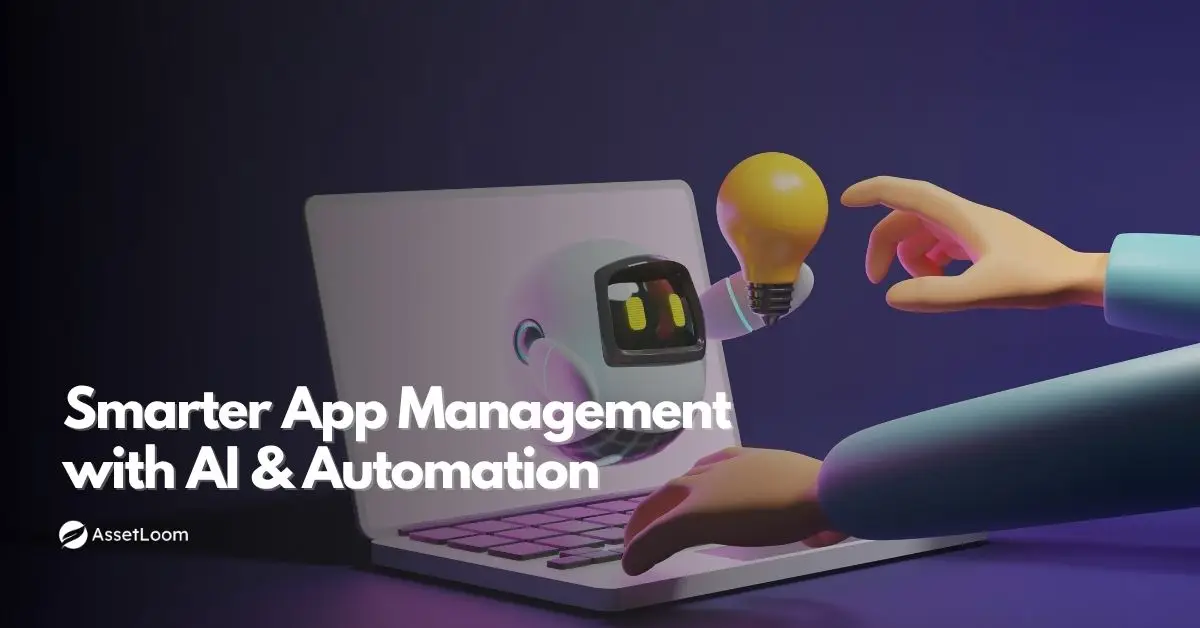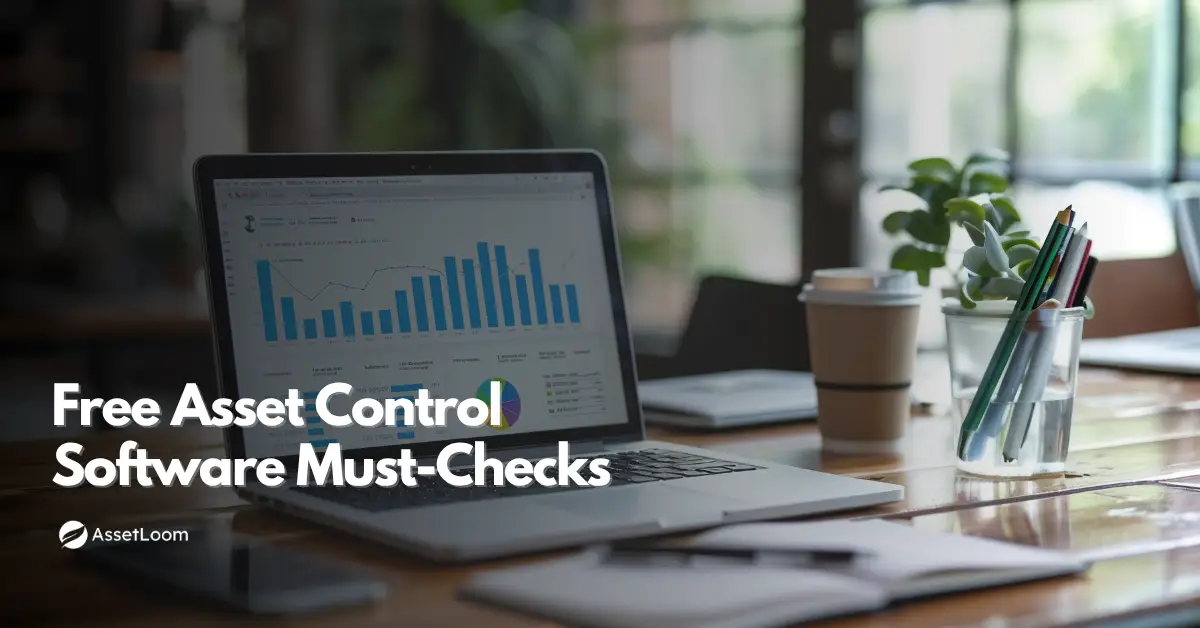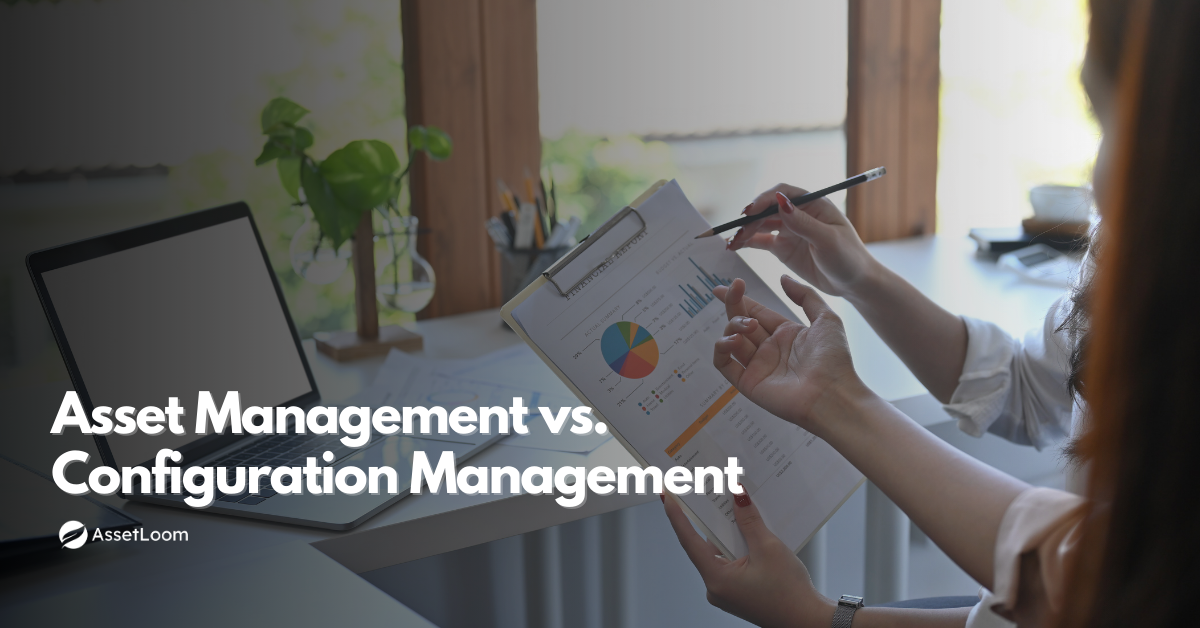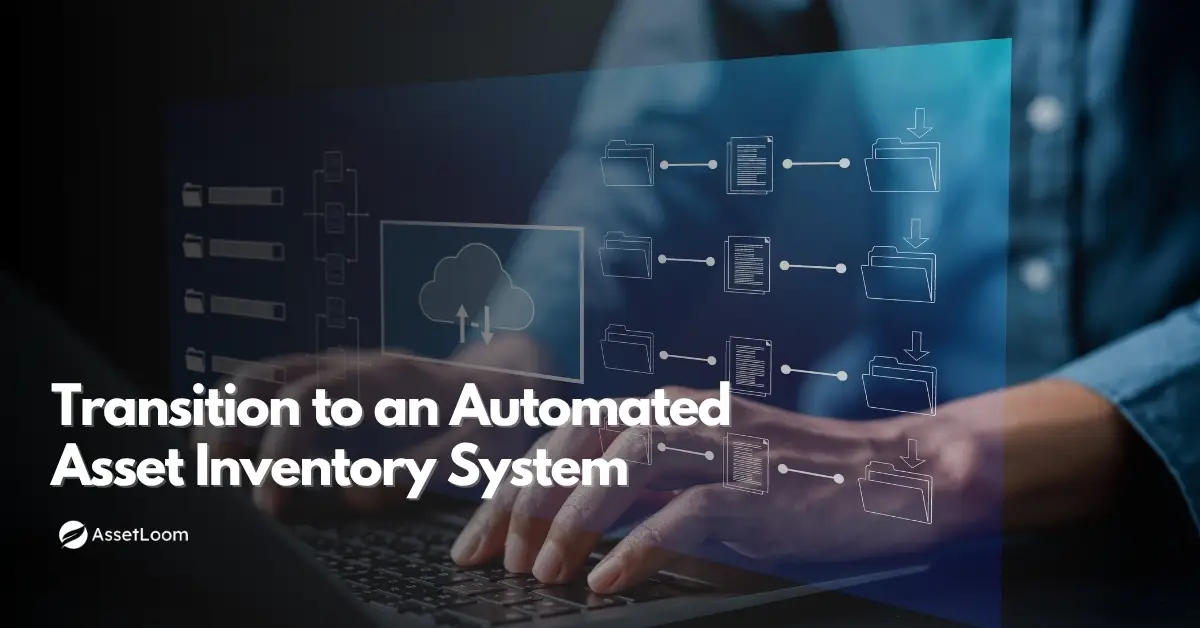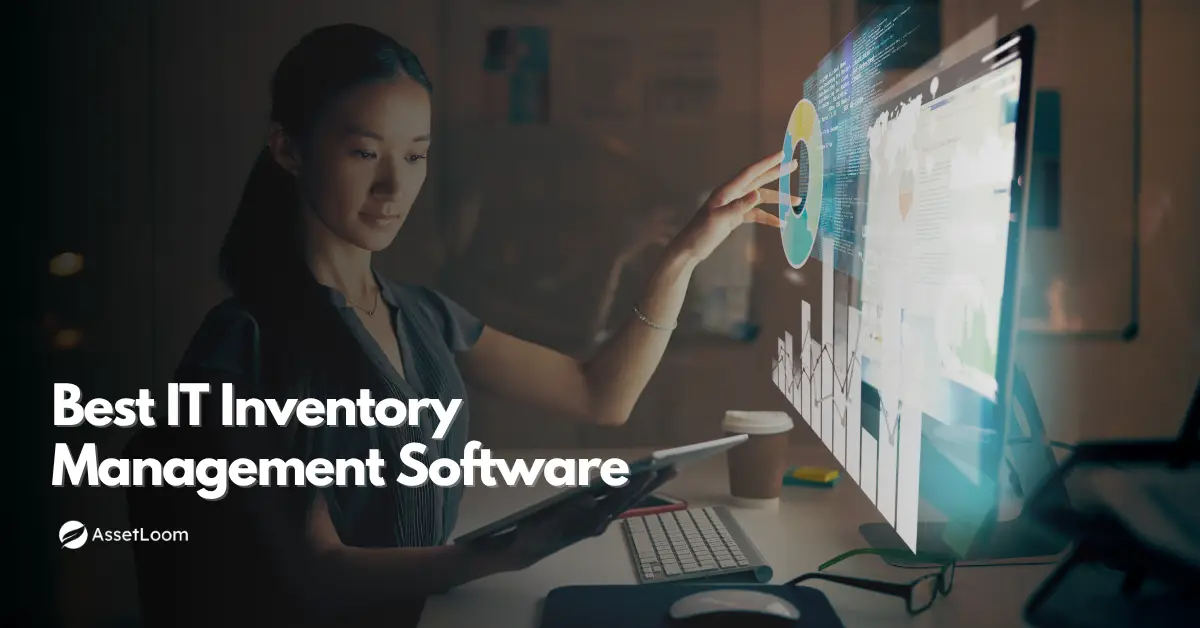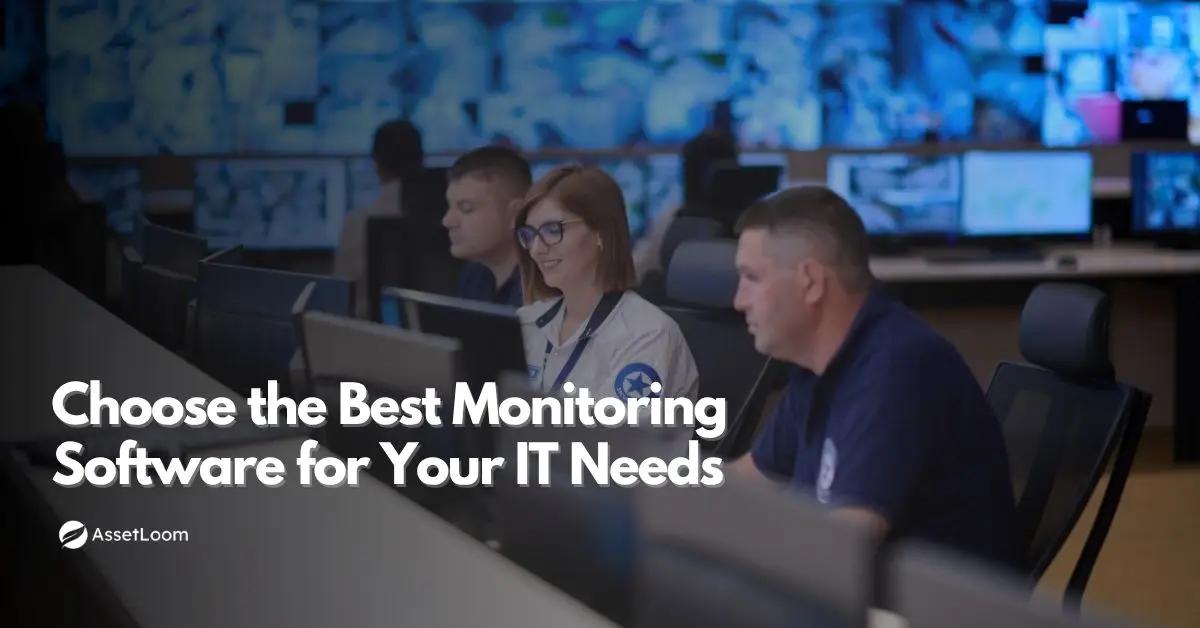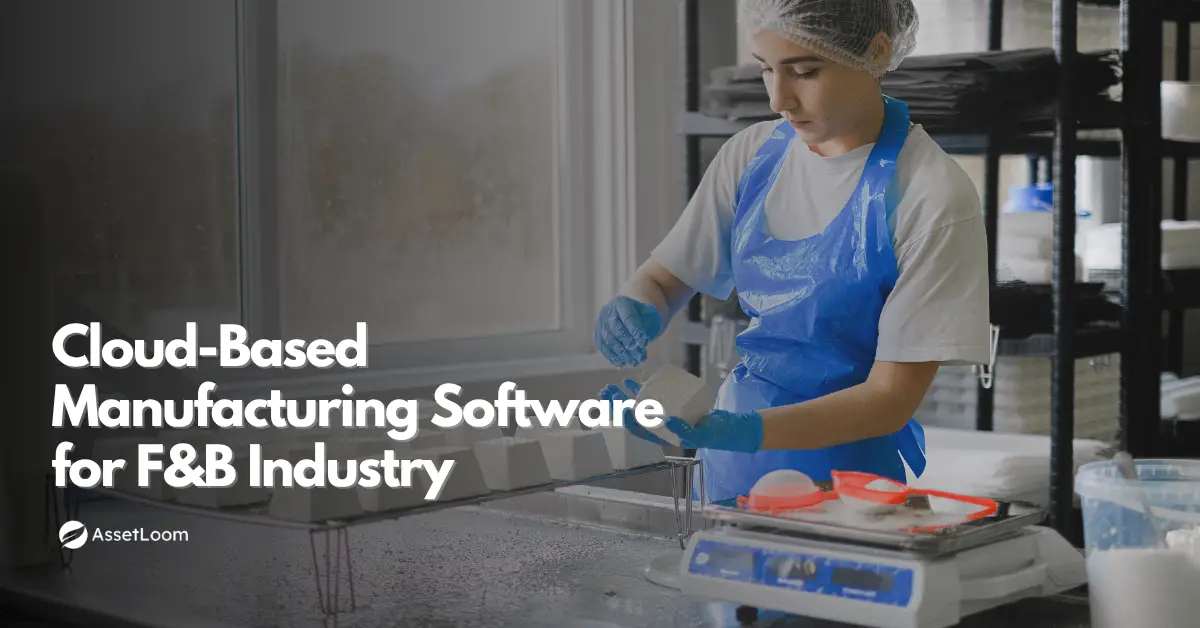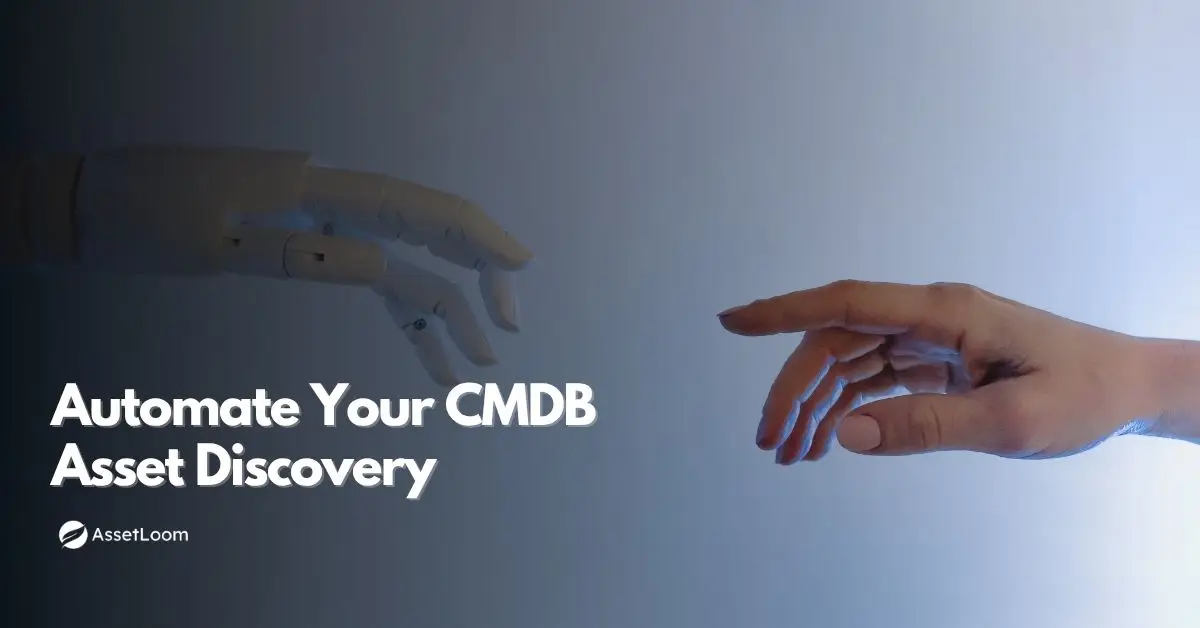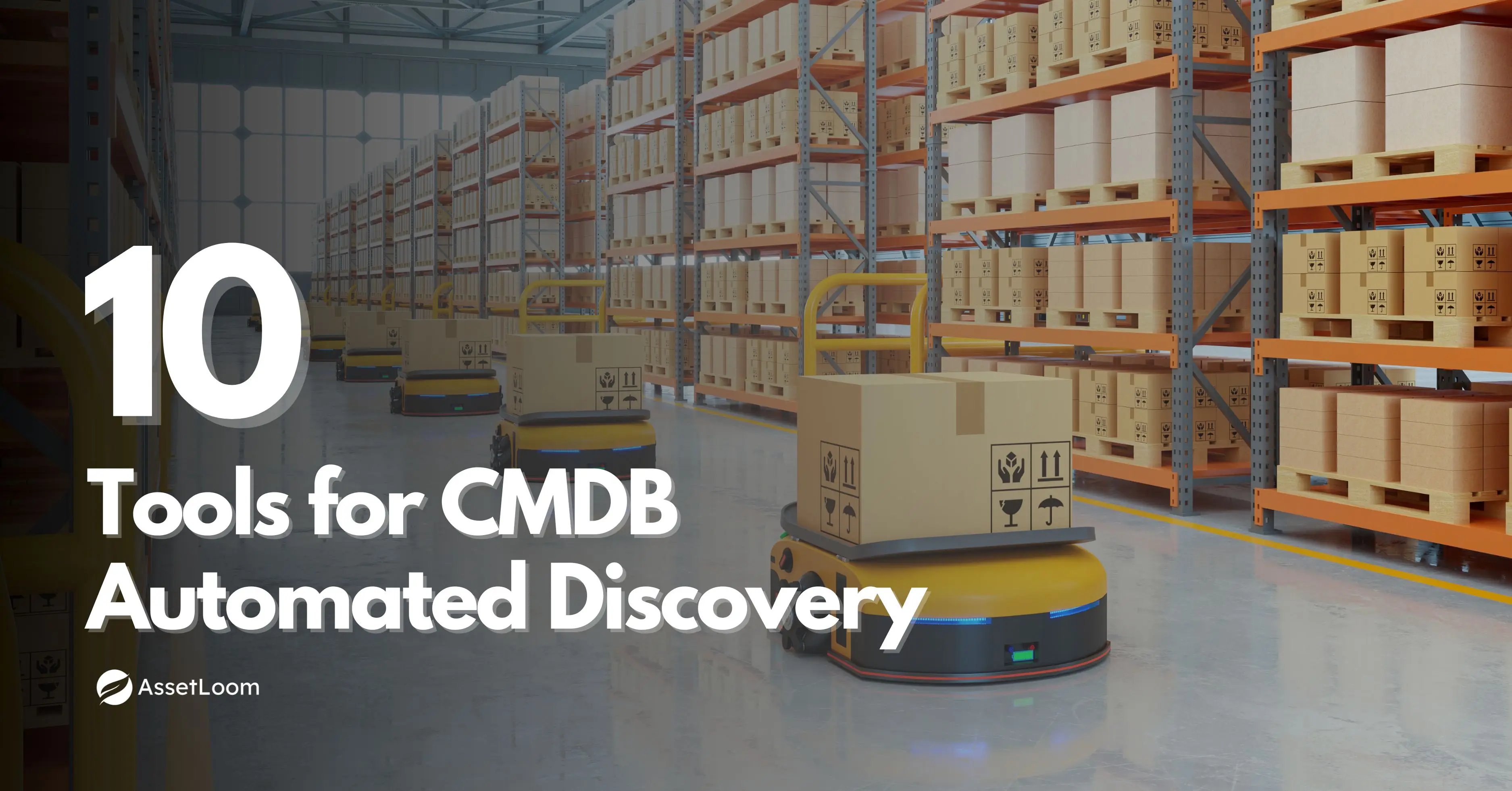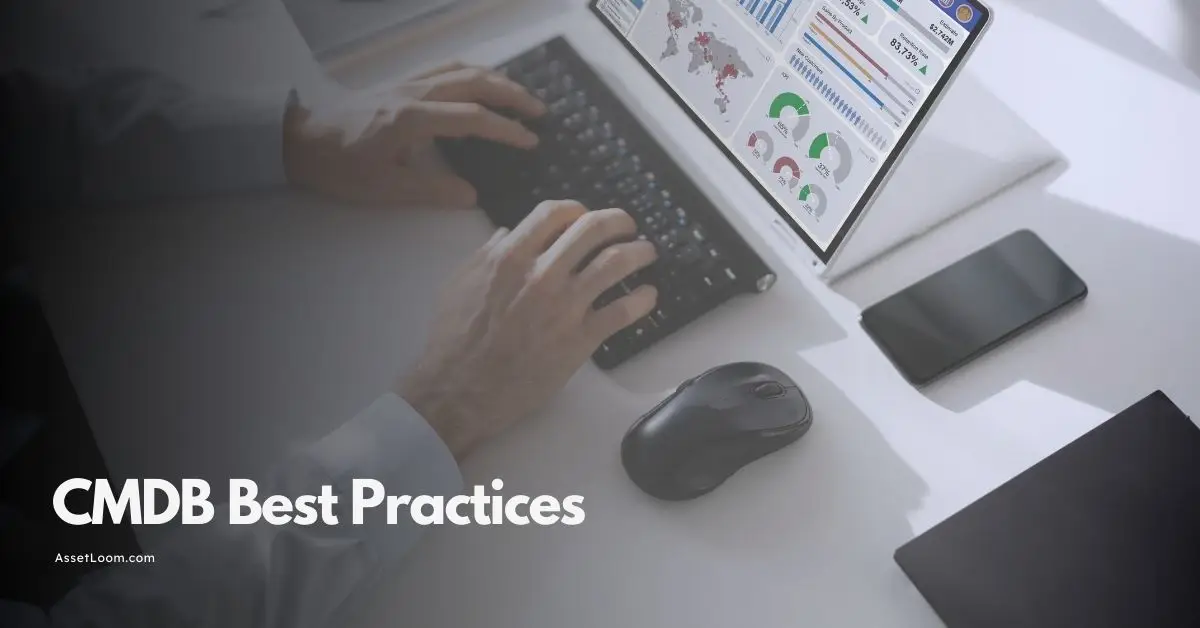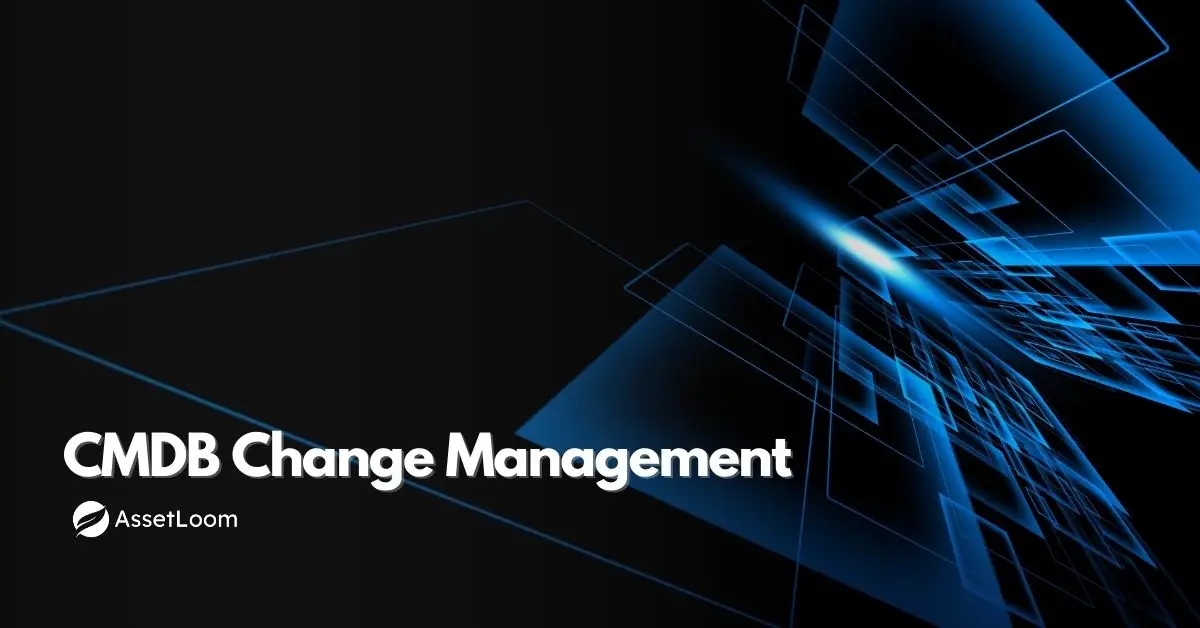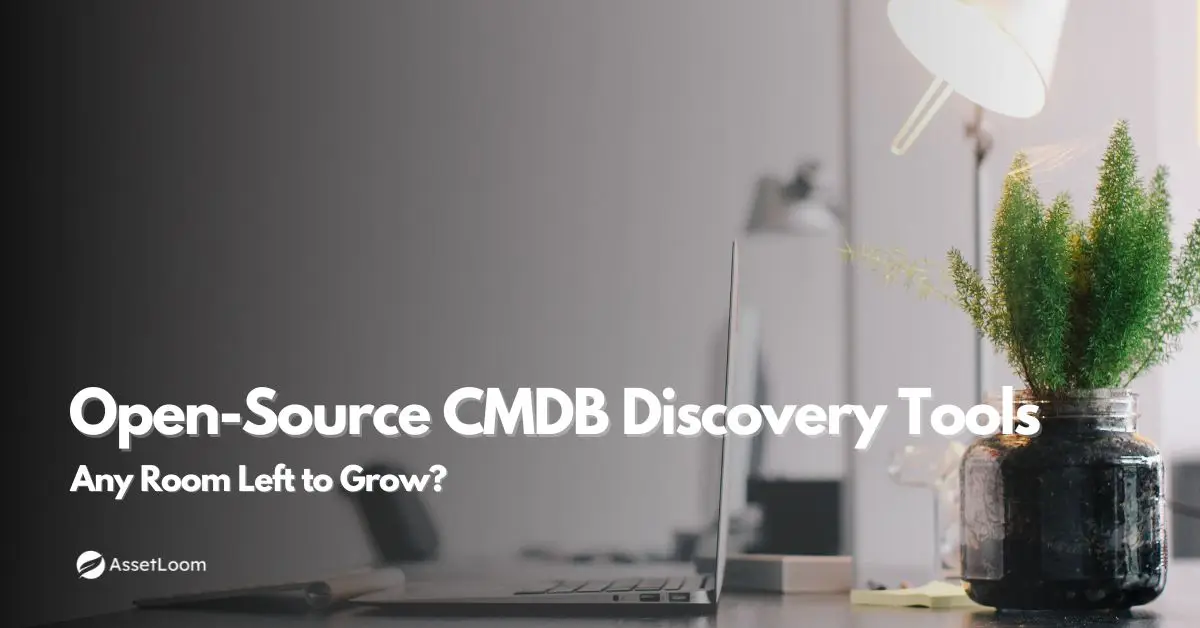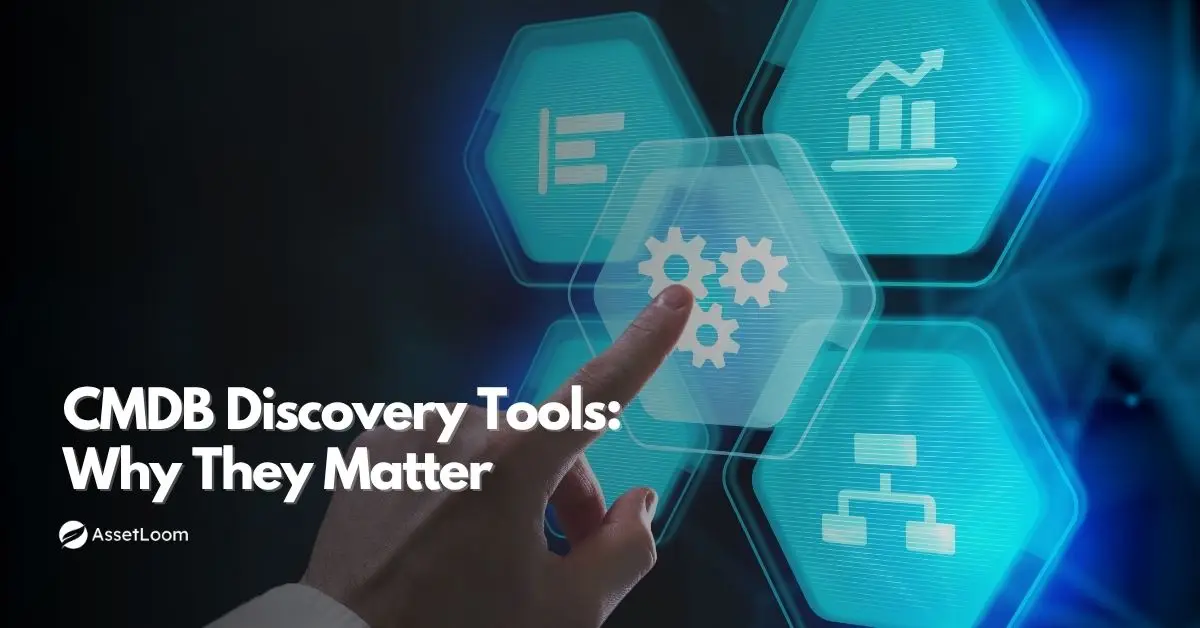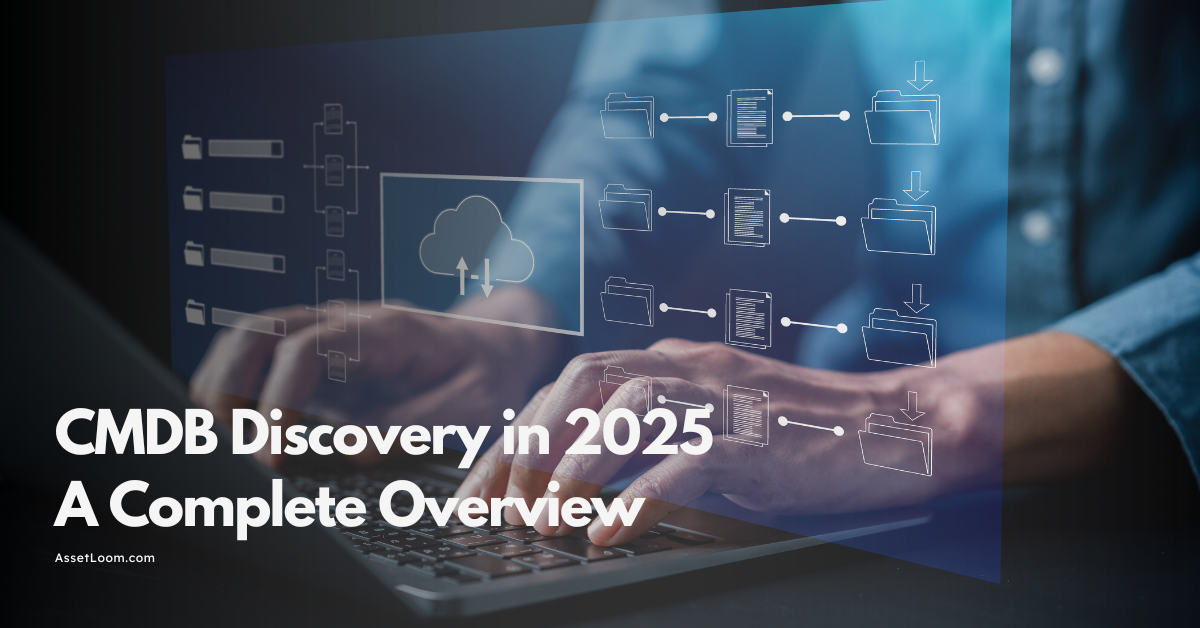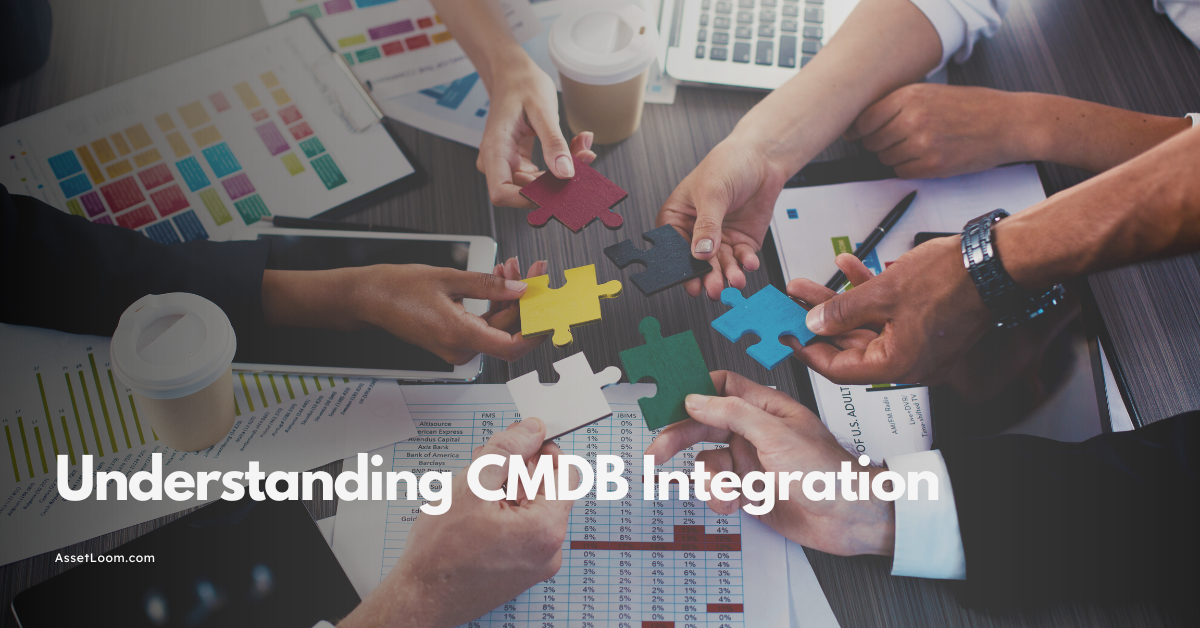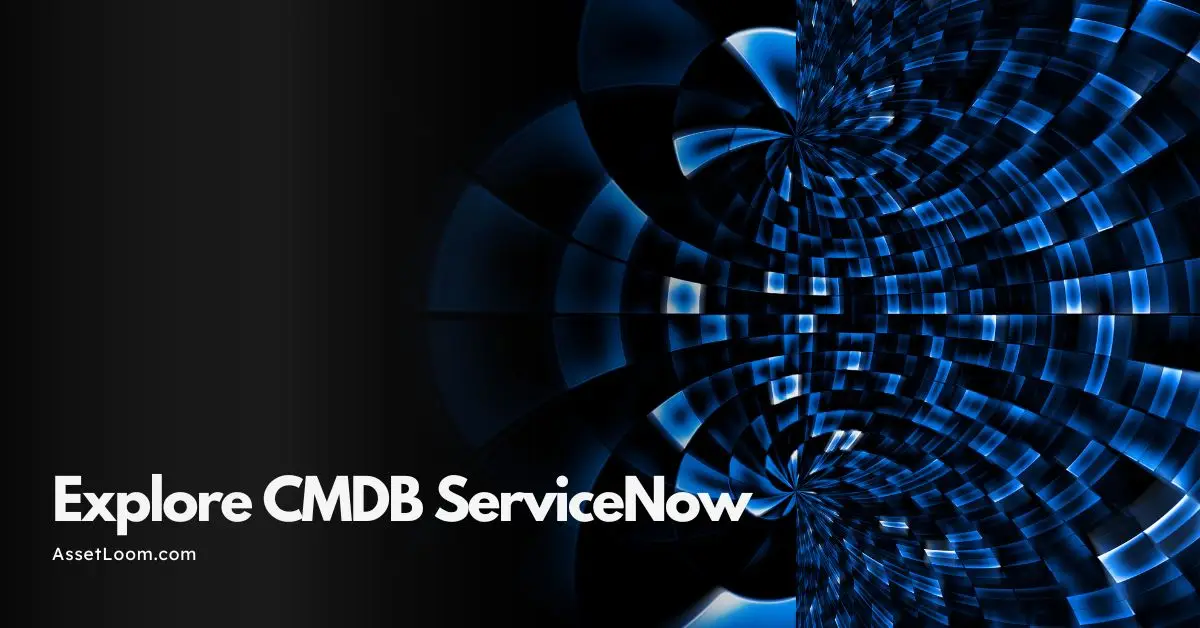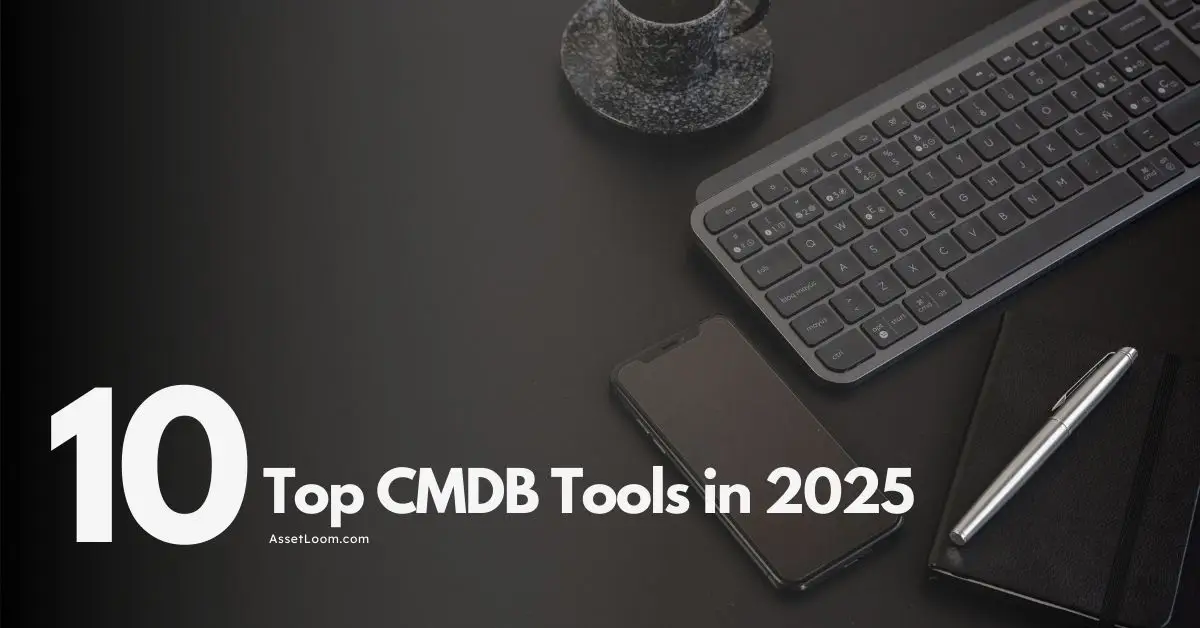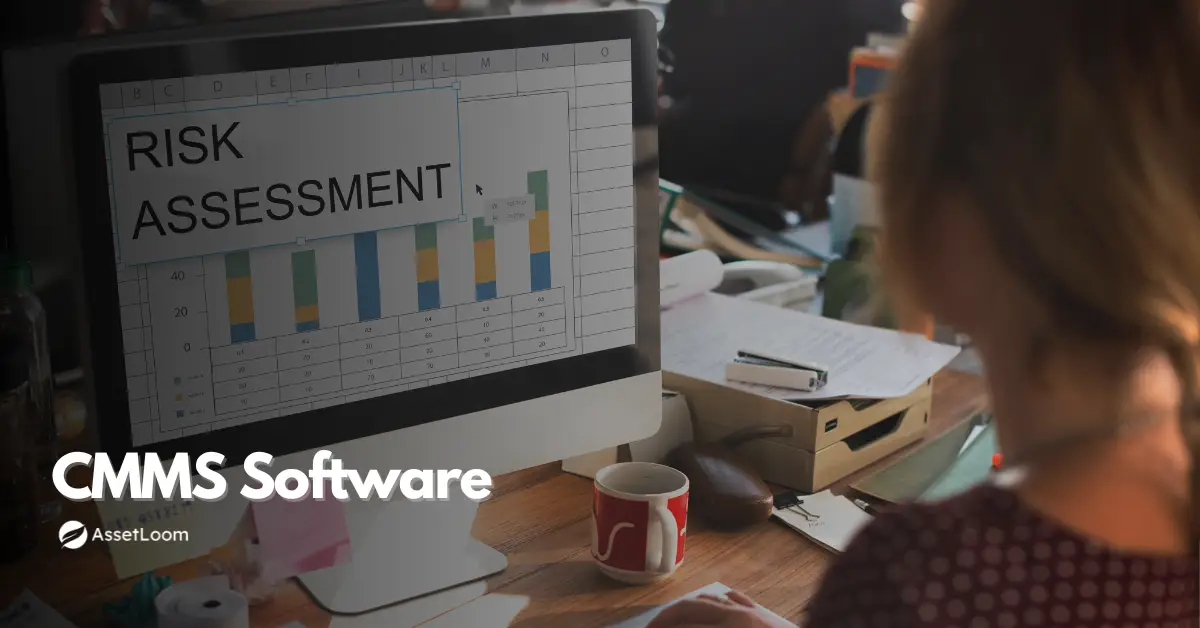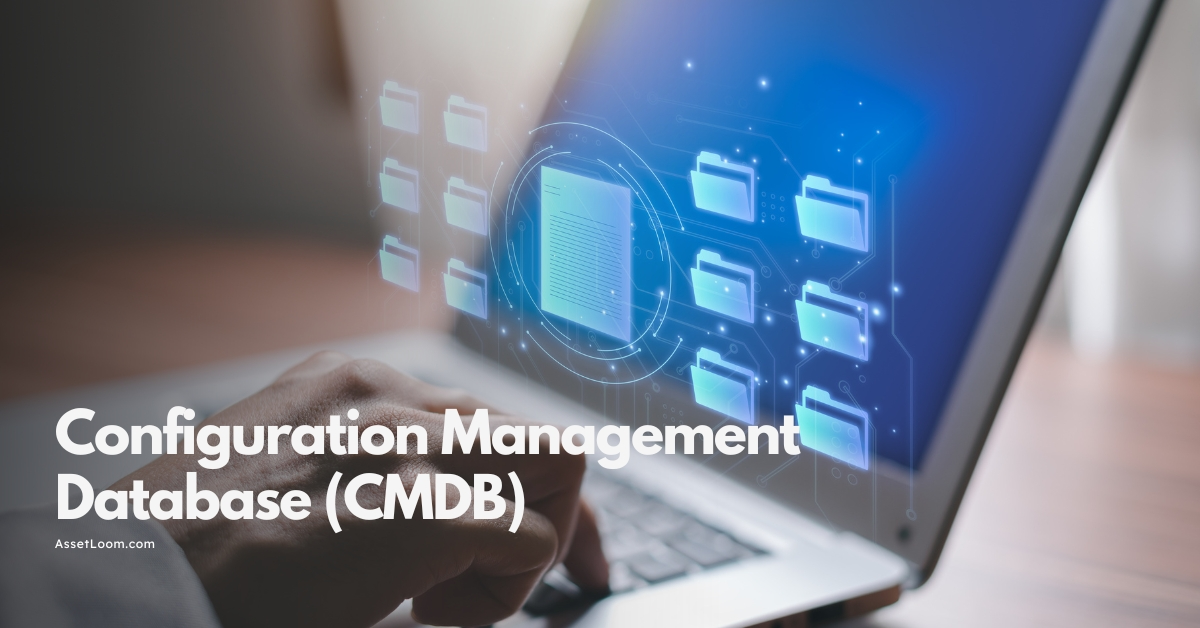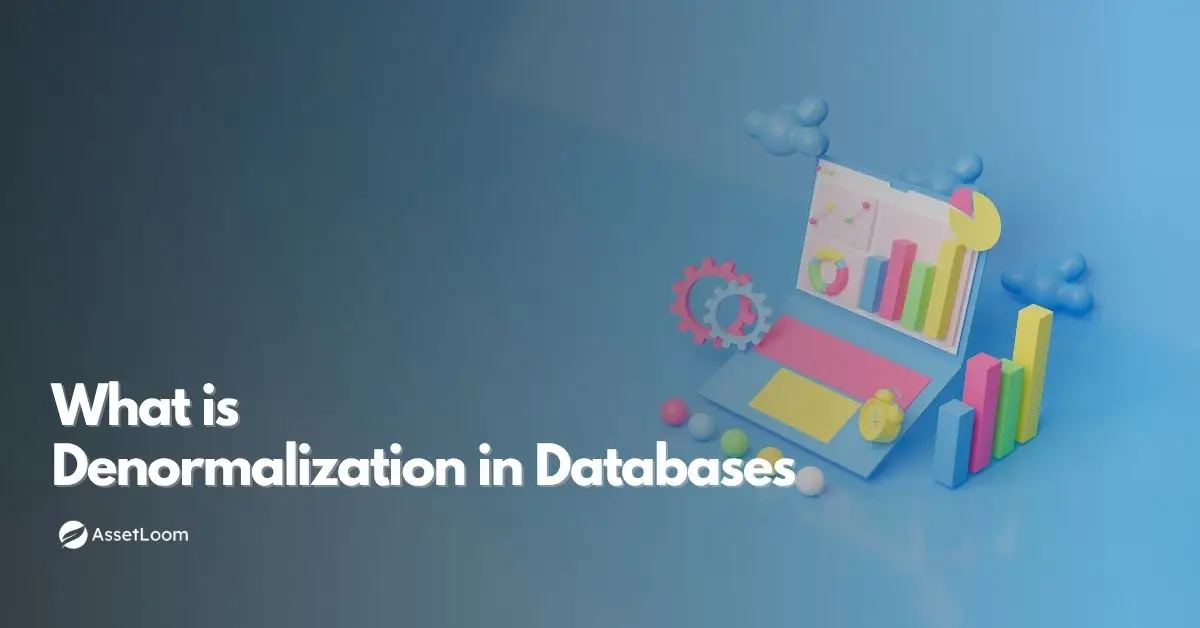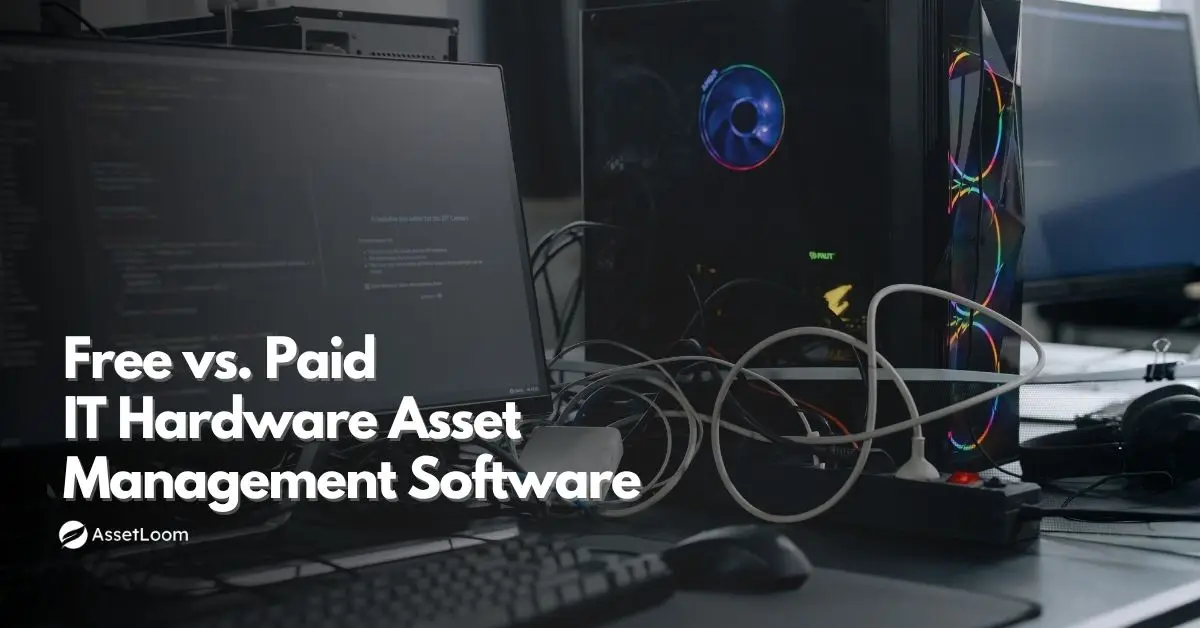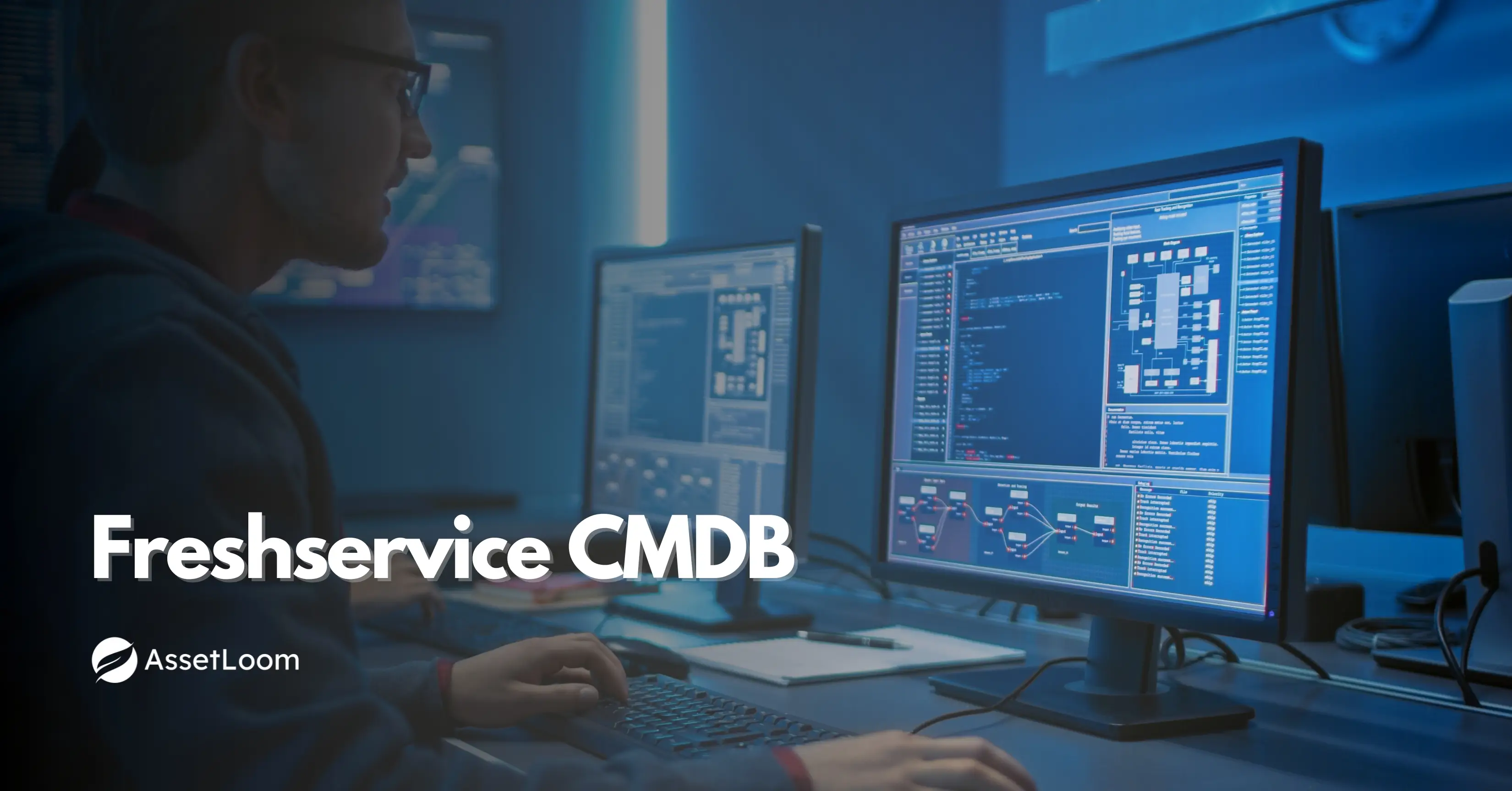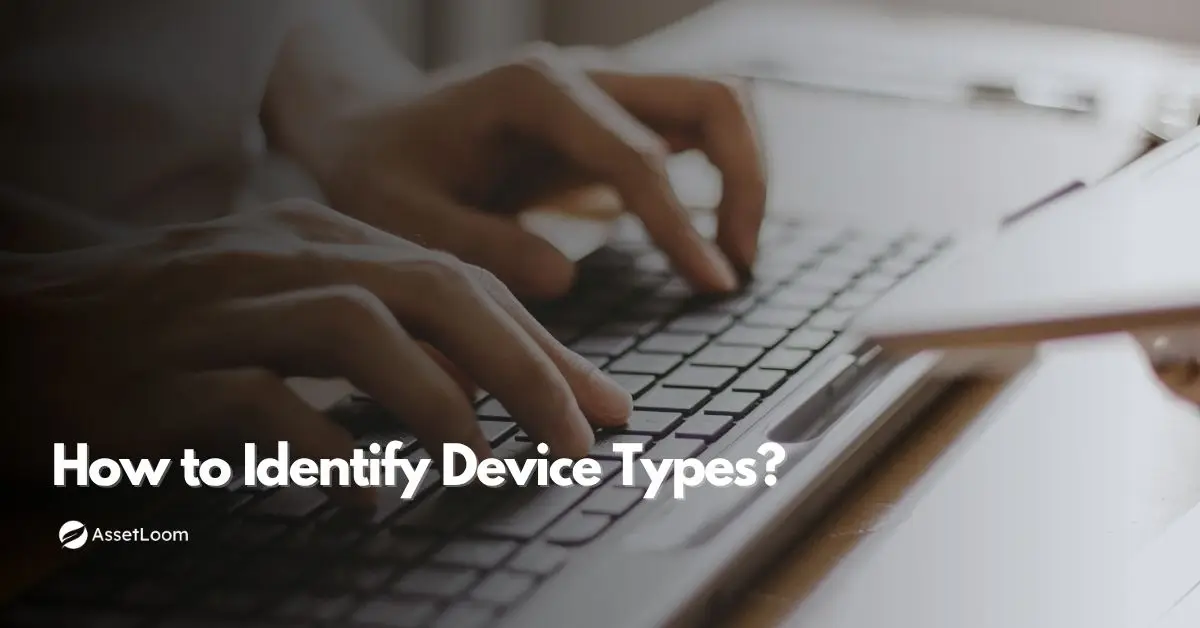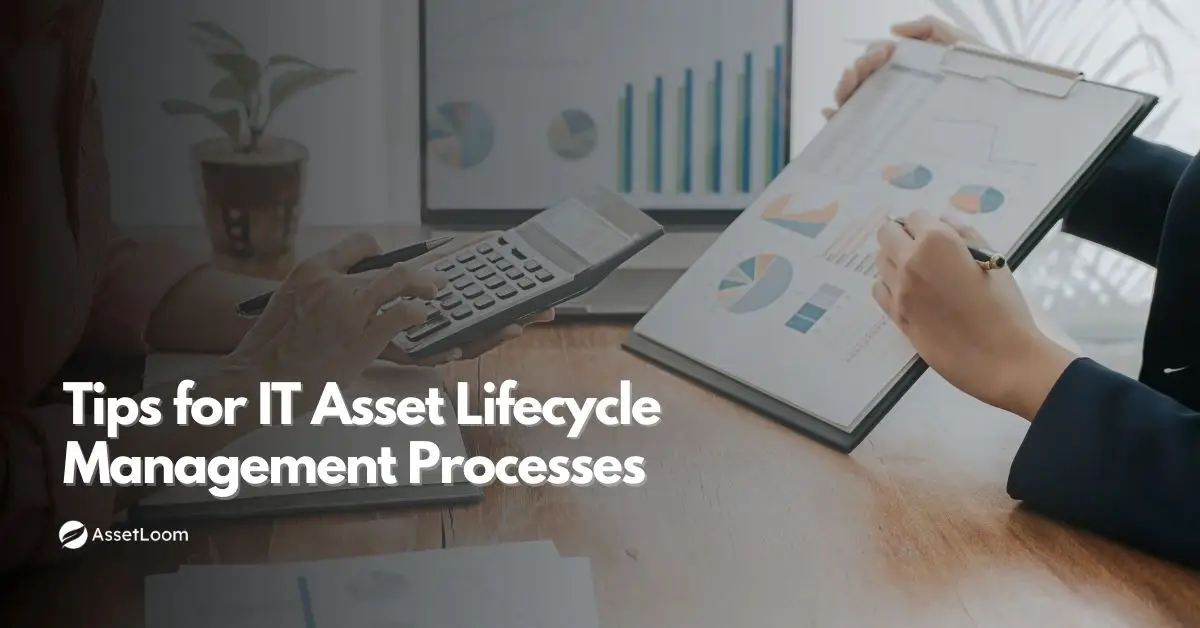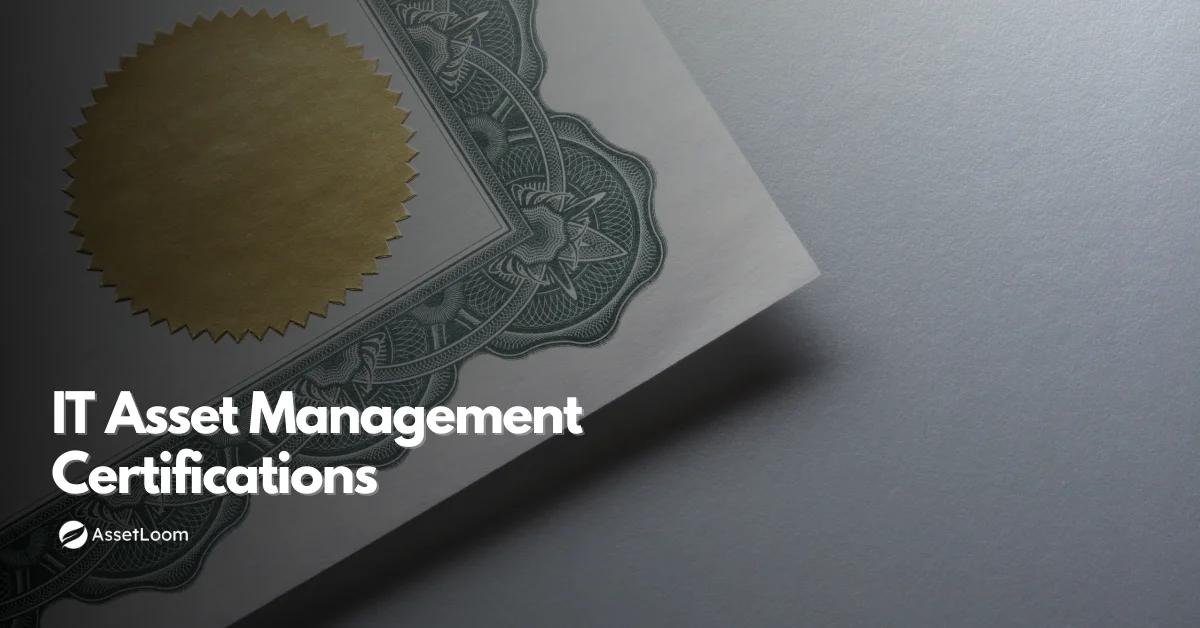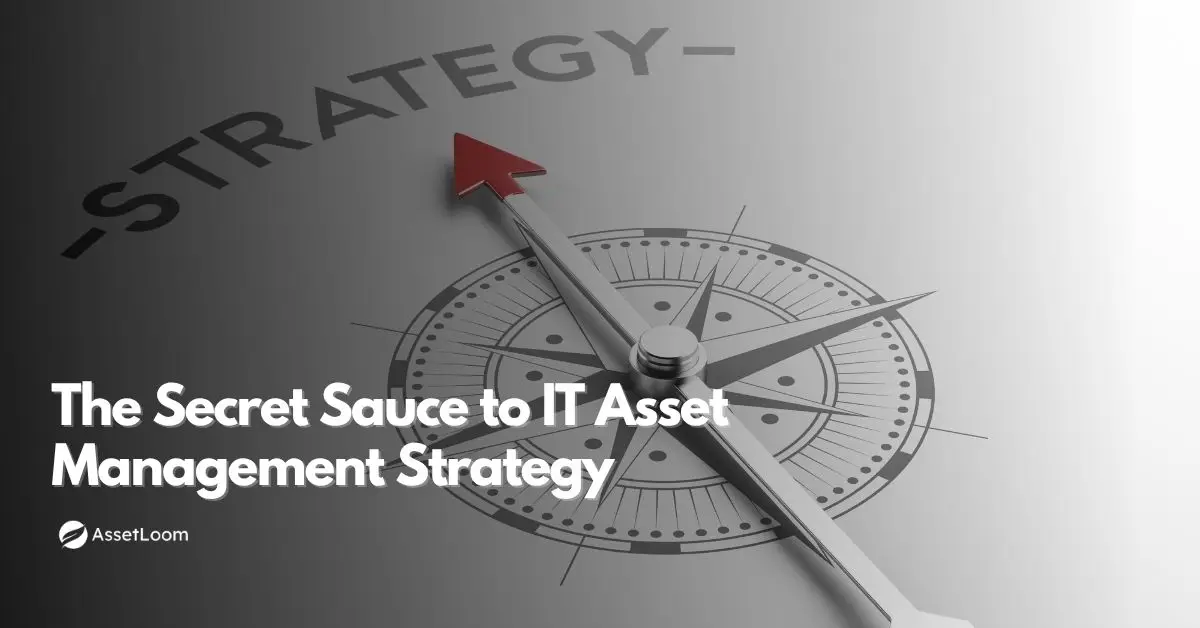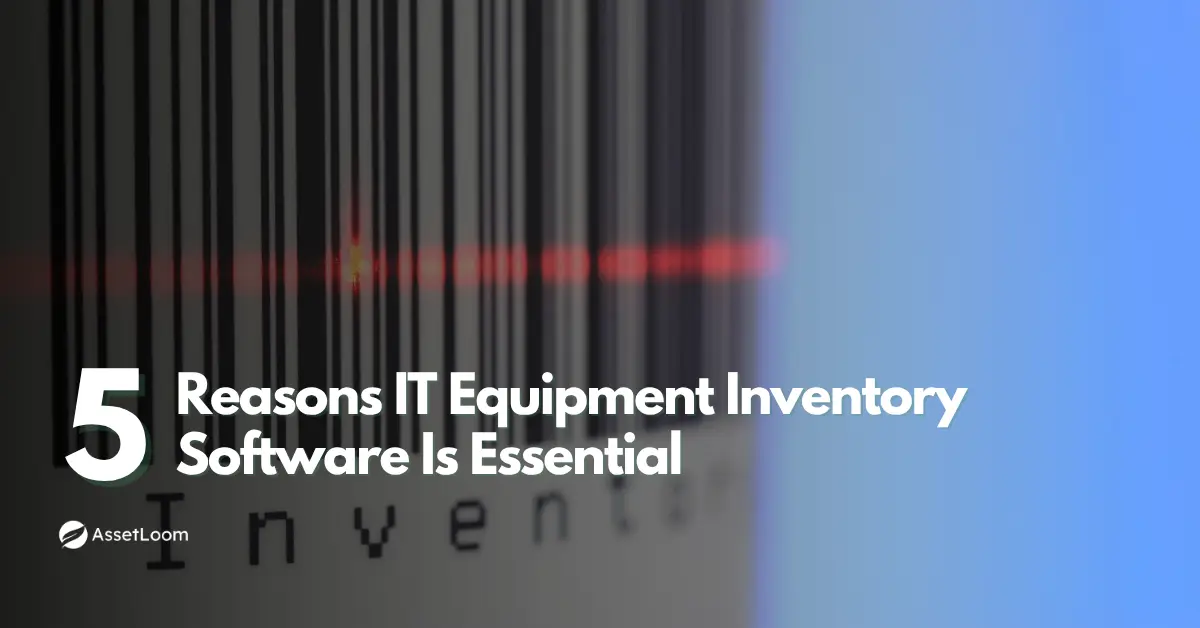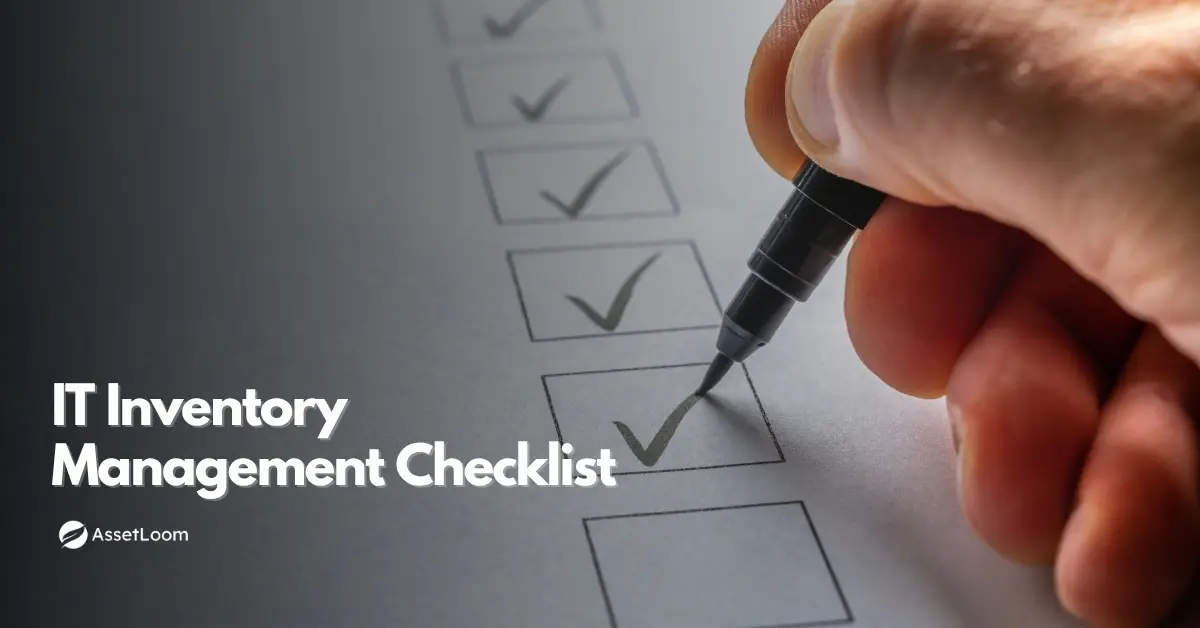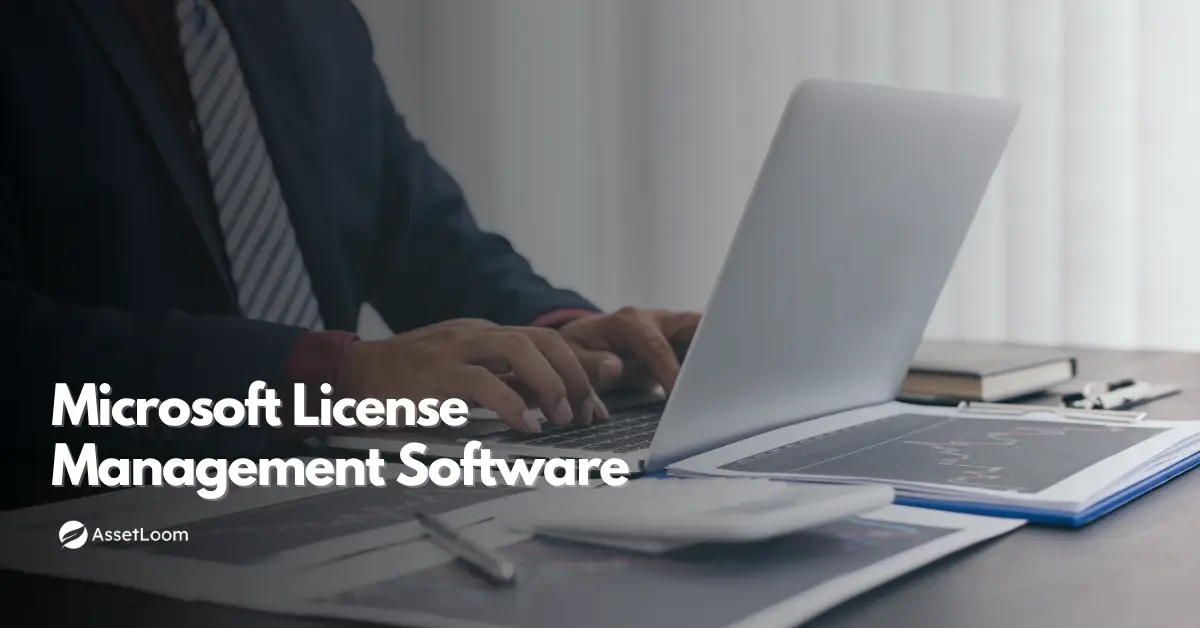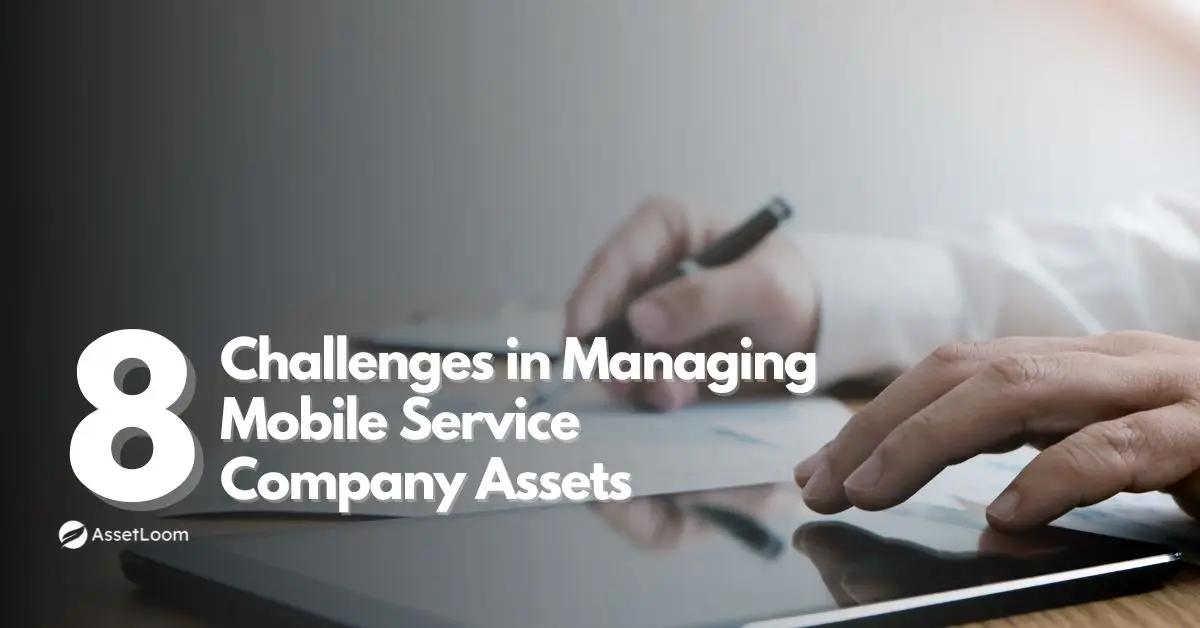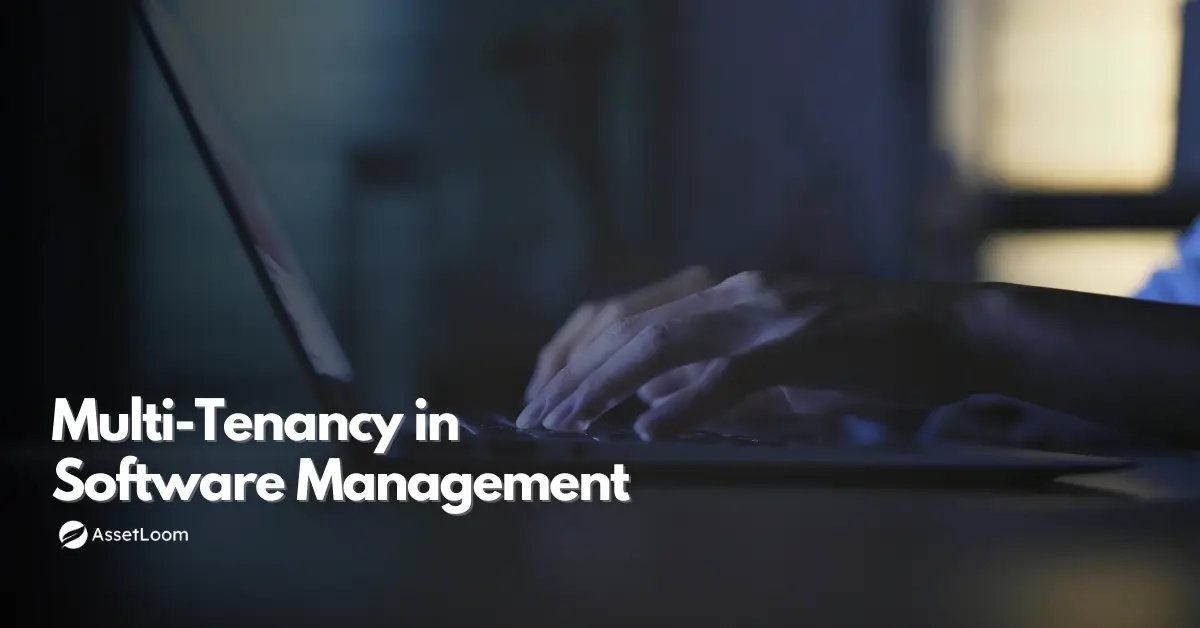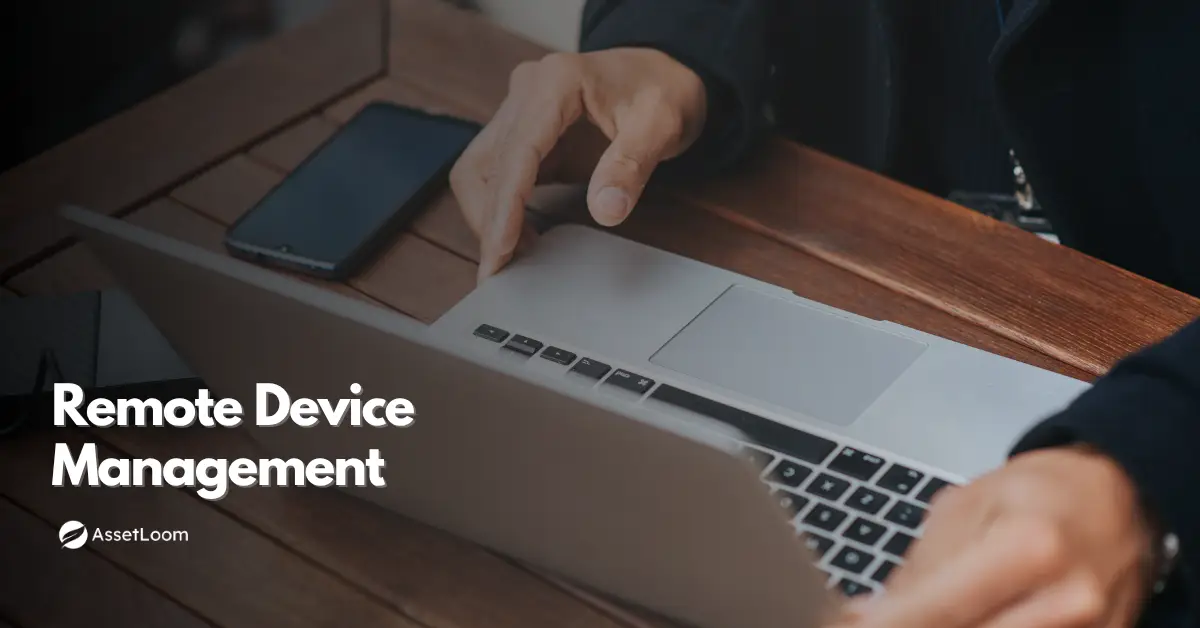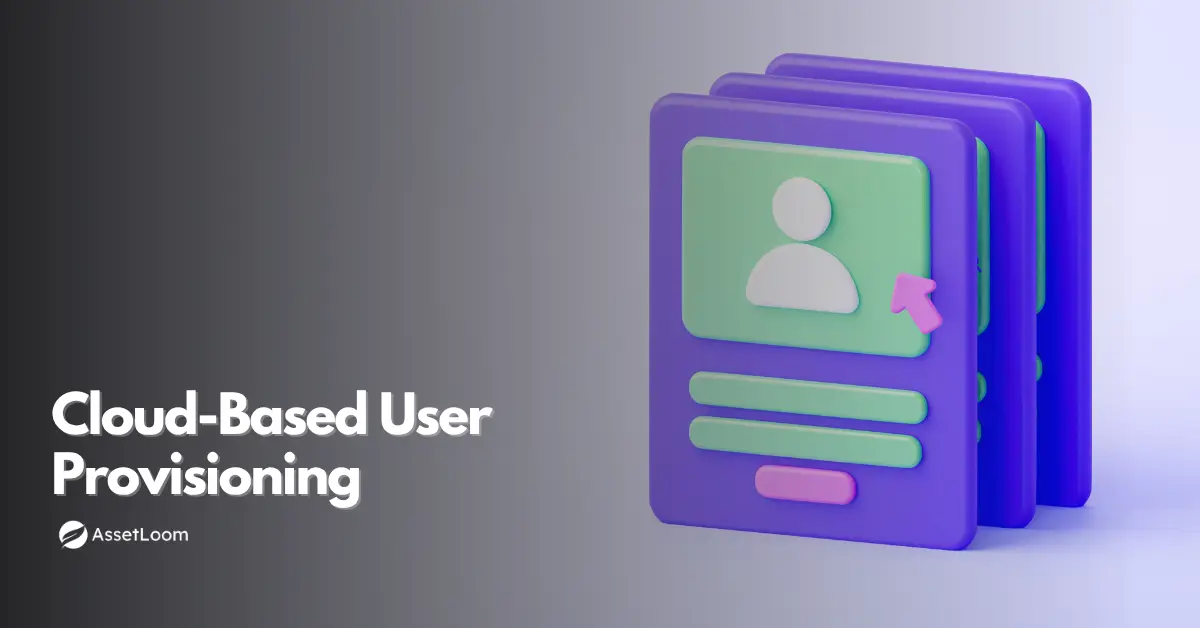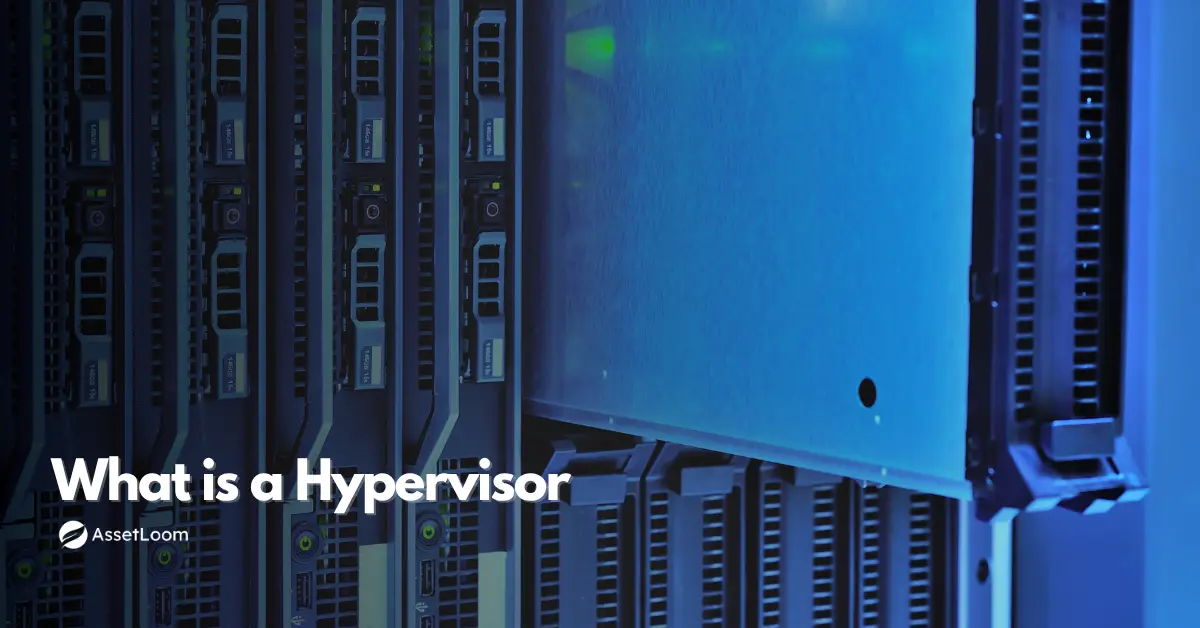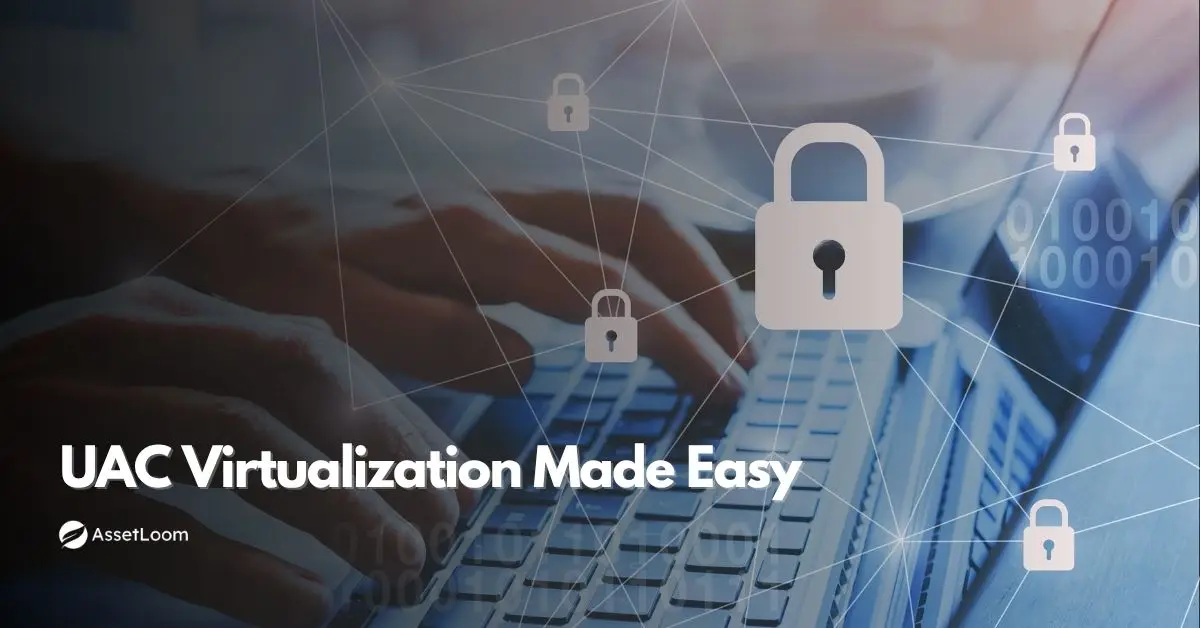The Role of Configuration Items (CIs) in ITIL Service Management
Learn how Configuration Items (CIs) drive ITIL success in change, incident, and problem management.
IT environments are constantly evolving, and keeping track of all the moving parts can be challenging. From software to hardware, everything needs to work together seamlessly. But when things go wrong, how do you quickly pinpoint the issue?
Configuration Items (CIs) are the key to organizing and managing these components effectively. Think of them as the building blocks that help IT teams manage and understand their systems better. In this blog, we’ll explore how CIs are essential in ITIL service management and how they can help you tackle common IT challenges more efficiently.
What Are Configuration Items (CIs)?
Configuration Items (CIs) are the building blocks of an IT environment. They represent the various components that make up an organization’s IT infrastructure, from hardware and software to documentation and network devices. CIs are tracked and managed to ensure that each part of the system works together smoothly.
For example, a server (hardware CI) might run an application (software CI), and both would be linked in a configuration management database (CMDB) to understand their dependencies. If a network switch (network CI) goes down, knowing its relationship with other CIs helps pinpoint and resolve the issue faster.
Read also: How to Build a CMDB in 7 Easy Steps
CIs Types
CIs come in different forms, including:
- Hardware: Physical devices like servers, computers, routers, and network switches.
- Software: Applications, operating systems, and custom-built software that run on hardware.
- Network Components: Items such as routers, firewalls, cables, and switches that enable communication between devices.
- Documentation: Configuration files, network diagrams, or procedures that define how CIs should operate.
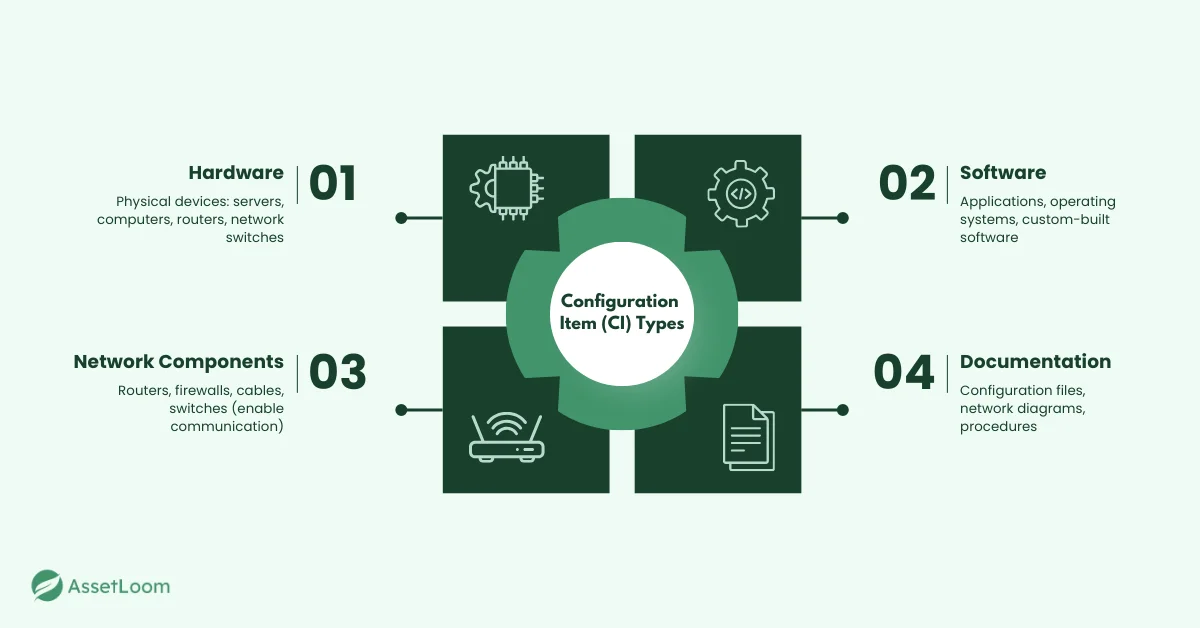
CI Attributes
Each CI is tracked with key attributes that make it identifiable and manageable. Common attributes include:
- CI ID: A unique identifier for each CI.
- Name: Descriptive names to differentiate between different CIs (e.g., “Database Server 01”).
- Version: The version number, especially for software CIs, to track updates or changes.
- Location: Whether it’s a physical location (e.g., server room) or logical location (e.g., cloud).
- Status: The current condition of the CI - whether it's active, in maintenance, or retired.
The Role of CIs in ITIL Framework
In the ITIL (Information Technology Infrastructure Library) framework, Configuration Items (CIs) play a critical role in ensuring that IT services run smoothly and efficiently. ITIL is all about aligning IT services with the needs of the business, and CIs are the foundation for managing this alignment effectively.
Configuration Management
The heart of managing CIs in ITIL is Configuration Management. This process ensures that all CIs are accurately documented, tracked, and updated in a Configuration Management Database (CMDB). By maintaining a central repository of all CIs, IT teams can easily track each item’s status, location, and dependencies. This makes it easier to assess potential impacts of changes or incidents.
Change Management
One of the most important aspects of ITIL is Change Management, and CIs are at the core of this process. When a change is proposed, it’s crucial to understand which CIs will be impacted. For instance, if you plan to upgrade a database (a software CI), you’ll need to consider how it might affect the servers (hardware CIs) or the network (network CIs) it runs on. Properly tracking and managing CIs ensures that IT teams can plan and implement changes without causing disruptions.
Incident Management
CIs are also vital for Incident Management. When an issue arises, identifying the affected CIs quickly helps IT teams resolve the problem faster. For example, if a server crashes, knowing the configuration details of the server and its dependencies helps technicians troubleshoot the issue and restore service efficiently. By linking incidents to specific CIs in the CMDB, IT teams can quickly determine the root cause and prevent future problems.
Problem Management
When recurring issues arise, Problem Management uses CIs to identify patterns and resolve underlying causes. By analyzing data from CIs, IT teams can spot trends and determine if a specific CI or group of CIs is consistently causing problems. This helps reduce the number of incidents over time and improves overall service quality.
Service Asset and Configuration Management (SACM)
Service Asset and Configuration Management is another key ITIL practice where CIs are essential. This practice ensures that all IT assets and configurations are properly tracked and managed, allowing for improved decision-making and resource allocation. With an up-to-date record of all CIs, businesses can better plan for upgrades, replacements, and other service improvements.
Benefits of Managing CIs in ITIL
Effectively managing Configuration Items (CIs) brings clear benefits to IT teams and the business as a whole:
- Improved Decision-Making: Accurate CI data helps IT managers make better decisions when planning changes, upgrades, or new projects. Knowing what exists and how components interact reduces guesswork and risk.
- Minimized Downtime: Tracking CIs allows IT teams to identify problems faster. Understanding dependencies between CIs speeds up troubleshooting and restores services quickly.
- Efficient IT Operations: Well-managed CIs make IT processes smoother. Teams spend less time searching for information, and routine tasks like updates or maintenance are easier to plan.
- Cost Efficiency: Keeping track of all CIs helps avoid unnecessary purchases, duplication, or redundant services, leading to better budget allocation and savings.
Best Practices for Managing CIs in ITIL
Managing Configuration Items (CIs) isn’t just about tracking assets. It’s about creating a clear picture of your IT environment that teams can rely on. Start by maintaining a centralized CMDB. Think of it as your single source of truth: all CIs, their status, and relationships should be logged here and kept up-to-date.
Next, classify and tag your CIs clearly. When each CI is labeled by type, function, and criticality, it’s much easier to see how changes or incidents might ripple through your system. Combine this with CMDB discovery tools: these tools automatically detect new CIs, update existing ones, and track changes across your IT environment, reducing errors and saving time.
Don’t skip regular audits. Even with automation, a quick review ensures your CI data matches reality, preventing surprises when incidents occur. Also, make sure your CIs are linked to ITIL processes like change, incident, and problem management. This way, troubleshooting is faster, changes are safer, and recurring issues are easier to prevent.
Finally, invest in your team. Training staff on how to manage CIs, update the CMDB, and use CI data effectively turns a static list of items into a living system that actively supports IT operations.
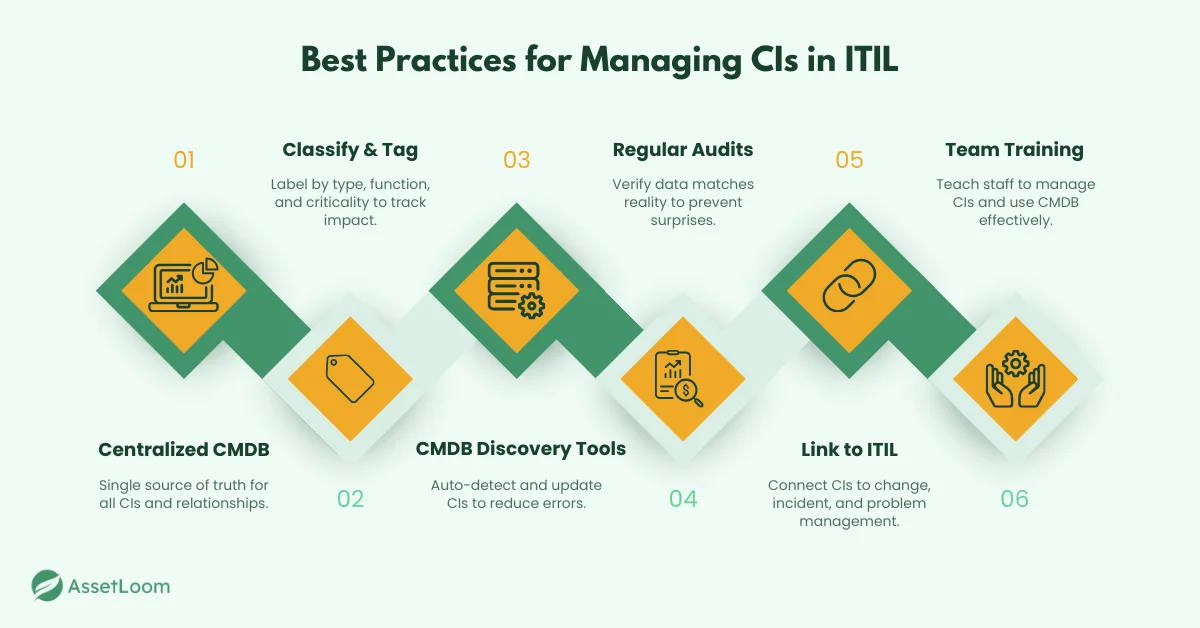
Conclusion
Configuration Items (CIs) aren’t just another IT checklist. hey’re the building blocks that keep your IT systems running smoothly. When you manage them well, incidents get resolved faster, changes happen safely, and recurring problems become less of a headache.
Keeping an up-to-date CMDB, using discovery tools, connecting CIs to ITIL processes, and making sure your team knows how to use this information turns CI management into a real asset, not a chore. The payoff? Fewer surprises, less downtime, and IT services that just work.
Start treating your CIs as the backbone of your IT environment today, and you’ll notice how much easier it is for your team to respond, adapt, and deliver value across the business.

Related Blogs
Subscribe for Expert Tips and Updates
Receive the latest news from AssetLoom. right in your inbox
